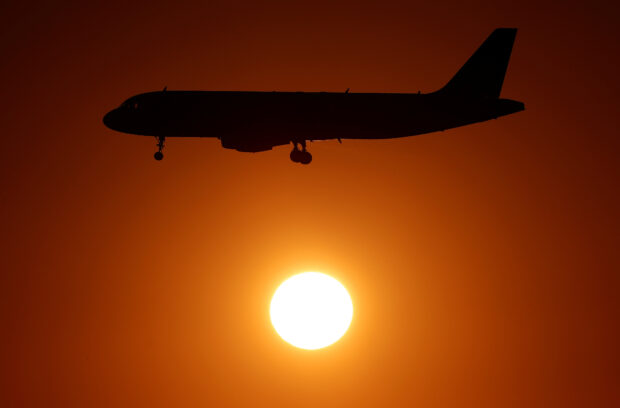Behind aviation recovery, suppliers struggle to keep up

An Alitalia airplane approaches to land at Fiumicino airport in Rome, Italy. REUTERS/Max Rossi/File photo
PARIS – For dealmakers, this week’s Paris Air Show will showcase the boom in demand for commercial planes and military technology.
What won’t be on display is the problem that has consumed time and attention of executives and consultants for the past two years: the long and still uncertain lead times in delivering the parts for all the planes and weapon systems being sold.
Airbus Chief Executive Guillaume Faury said things have begun to stabilize. Other senior executives see a glimmer of hope.
But there is an emerging consensus that the industry’s sprawling supply chain – strained by rising costs, parts shortages and a scarcity of skilled labor in the wake of the pandemic – will have to be remade before it can recover fully, a process that will take years.
“I can’t stress enough the tsunami that it (the pandemic) created in our supply chain. The good news is traffic is back,” the CEO of engine maker CFM International Gael Meheust told reporters ahead of the show.
Smaller suppliers that took on debt during the pandemic and are now struggling to fund new capacity remain a chief concern.
“The issue now is deep down in the supply chain, tier-three suppliers and lower, where the investment and headcount required for the demand picture makes them very nervous and makes their lenders very nervous,” said Andy Cronin, CEO of lessor Avolon.
Much of the response involves putting out fires one by one and discussing priority lists that can change month by month.
“There are a lot of smaller and medium sized companies for whom COVID was a real challenge,” added Mike Madsen, CEO of supplier Honeywell Aerospace. “Helping them get back to, and now above, 2019 production levels is where all the focus is.”
Labor shortages are hurting the whole ecosystem from new assembly to repair shops as demand rebounds for travel and planes.
“Every day we get a call from somebody in aerospace asking for help in fixing their supply chain,” said Eric Bernardini, a managing director at U.S. consultancy AlixPartners.
Among the items recently flagged as a concern are weather radar and emergency locator transmitters (ELT) for both Airbus and Boeing narrowbody jets, two industry sources with direct knowledge of the matter said.
A spokesperson for manufacturer Honeywell said “we are not aware of any delayed aircraft deliveries related to either of these product lines”.
Airbus and Boeing declined specific comment. Airbus said it was monitoring supplies closely. Boeing said it was working with suppliers to address industry-wide challenges.
Remaking the chain
Speaking separately, Madsen said Honeywell saw an overall improvement in the “electrical part of the supply base,” as less demand for consumer products frees up more capacity.
Large suppliers are looking at bringing some work in-house.
“We’re looking at it more broadly than we ever have in probably the last 20 years,” Madsen said.
Consolidation could also play a role. When Connecticut-based Whitcraft Group and Paradigm Precision merged to form Pursuit Aerospace in February, they only made a single part in common.
Whitcraft had no facilities to make castings but was able to shift work to a Paradigm casting facility in Tunisia. Paradigm, in turn, was able to shift forging work to Whitcraft.
“We’re able to move some of the buy we had with outside parties into ourselves,” said Pursuit Aerospace CEO Doug Folsom.
Airbus’ Faury, who also heads France’s Gifas aerospace industry association, said there had been almost 80 M&A moves in France alone since 2020 to support the very smallest companies.
M1 Composites Technology, which manufactures and repairs parts like radar enclosures, more than doubled the size of its Montreal-based factory during the pandemic but still struggles with parts procurement.
“The supply chain can’t just get back to 2019, it has to be better than 2019,” M1 president Lorenzo Marandola said.